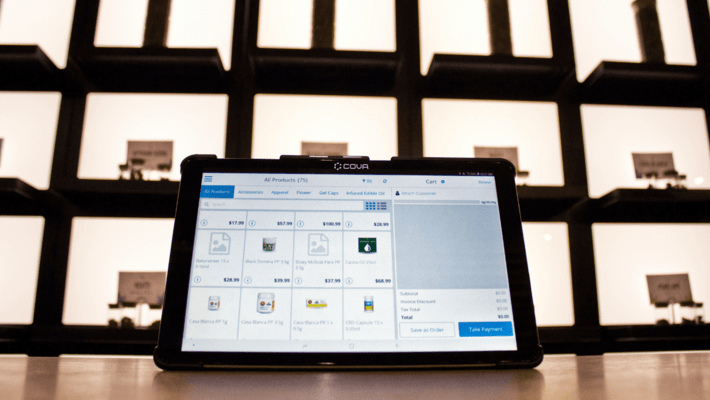
7 Inventory Management Tips for Dispensaries in 2023
Published on 1/21/23
It's no secret the cannabis industry is booming. While it's projected to be worth $24 billion by 2025, there are growing pains with such a fast-growing market. One of the most pressing issues facing dispensaries today is inventory management.
Managing inventory can be difficult, especially when dealing with such a high volume and variety of products. Here's what you need to know about inventory management for dispensaries, plus seven tips for success.
What is Inventory Management?
Inventory management is the process of organizing, tracking, and storing your dispensary's product supply. This includes tracking how much product you have on hand, where it's being stored, and when it needs to be restocked. While it's vital in all industries to have accurate inventory management, it's imperative in the cannabis industry for two reasons.
Dispensaries must track their inventory from seed to sale to comply with state and local laws. This means having a system to track every cannabis product from when it's grown to when it's sold. Owners can face hefty fines or even jail time if they can't produce accurate inventory records.
Two, cannabis products have a limited shelf life and can lose potency. Dispensaries need to have a system that tracks when products are received, how long they've been in stock, and when they expire. This helps to ensure customers are getting the freshest products possible.
Why Inventory Management Is Important
There are a few key reasons why dispensary inventory management is so essential for dispensaries:
- To maintain compliance with state regulations. For example, in many states, dispensaries and cannabis businesses are required to track their inventory from seed to sale.
- To avoid product shortages. When customers come into your dispensary looking for a specific product, and you don't have it in stock, they'll likely go to a competitor.
- To prevent product waste. If you have products nearing their expiration date, move them off your shelves before they go bad.
1. Regularly Audit Your Inventory
A crucial part of inventory management is auditing your product supply regularly. This helps to ensure your records are accurate and up to date. Depending on the size of your dispensary, audit your inventory weekly or biweekly.
You can also split up your inventory into sections, auditing one section at a time. For example, audit your flower inventory for one week and your edibles the next. As your stock grows, you may need to increase the frequency of your audits.
2. Monitor Key Performance Indicators
 Unsplash
UnsplashThere are several key performance indicators (KPIs) all dispensaries should track, including:
- Inventory turnover rate: Measures how often your dispensary sells through its inventory. A higher turnover rate is good because it means you're not tying up too much capital in a product that isn't selling.
- Days to sell through inventory: Measures how long your dispensary takes to sell an item after it's received. For example, if you receive a product on Monday and sell it on Wednesday, your days to sell through inventory is two.
- Gross margin: Measures the difference between the cost of a product and the selling price. A higher gross margin means you're making more money per sale.
These are just a few of the many KPIs you can track to gauge your dispensary's performance.
3. Use Third-Party Analytics
Software can help with inventory management, including names like GreenBits and Flowhub. These programs track your product supply and sales data in real-time, making it easy to monitor your KPIs.
The software also generates reports that can audit your inventory. Since these platforms are mobile-friendly and straightforward to use, you can set one up in a matter of minutes to monitor your inventory from anywhere.
4. Stay Organized
 Unsplash
UnsplashThis is a two-part process - physical inventory and digital inventory.
- Physical inventory: When you receive a new product shipment, immediately put it away in its designated spot. This can help you track what's in stock and where it's located.
- Digital inventory: Besides tracking your product supply, you must also track your sales data. This includes how much product you sell and at what price. Keeping accurate records will help you monitor your KPIs and make informed decisions about inventory management.
- Don't be afraid to make changes. The most important thing is to find a system that works for you and your dispensary.
5. Communicate with Your Team
Inventory management is a team effort. Make sure everyone knows where products are located and how to track them. You should also have a system in place for ordering new products to stock. When everyone is on the same page, keeping track of inventory and avoiding mistakes is more manageable.
6. Be Flexible
 Unsplash
UnsplashThe cannabis industry is constantly changing. New products are being developed, and the laws governing the sale of cannabis are in flux. Your inventory management system will need to be flexible to accommodate these changes.
For example, you might need to add new products to your system or change how you track sales data. These adjustments could mean new product categories as your state expands its list of legal cannabis products or more requirements for tracking specific concentrates or edibles.
7. Drive More Orders with Where's Weed
You undoubtedly want more eyes on your business and more people coming through your doors. By getting your dispensary listed at Where's Weed, you can reach qualified customers in a highly regulated industry, pushing more traffic to your website.
Traffic to the Where's Weed website is over 85% organic, which means we inherently attract users with high purchase intent. Whether you choose to simply claim your listing or opt for additional paid opportunities for better visibility, we'll help you make the best marketing decisions for your business.
